MV Agusta! First lesson: It’s Agusta, not Augusta. This brand is so quintessentially Italian, you can almost smell the espresso—despite its Malaysian, American, Russian, and most recently, Austrian ownership. A fusion of motorcycle, sport, and luxury!
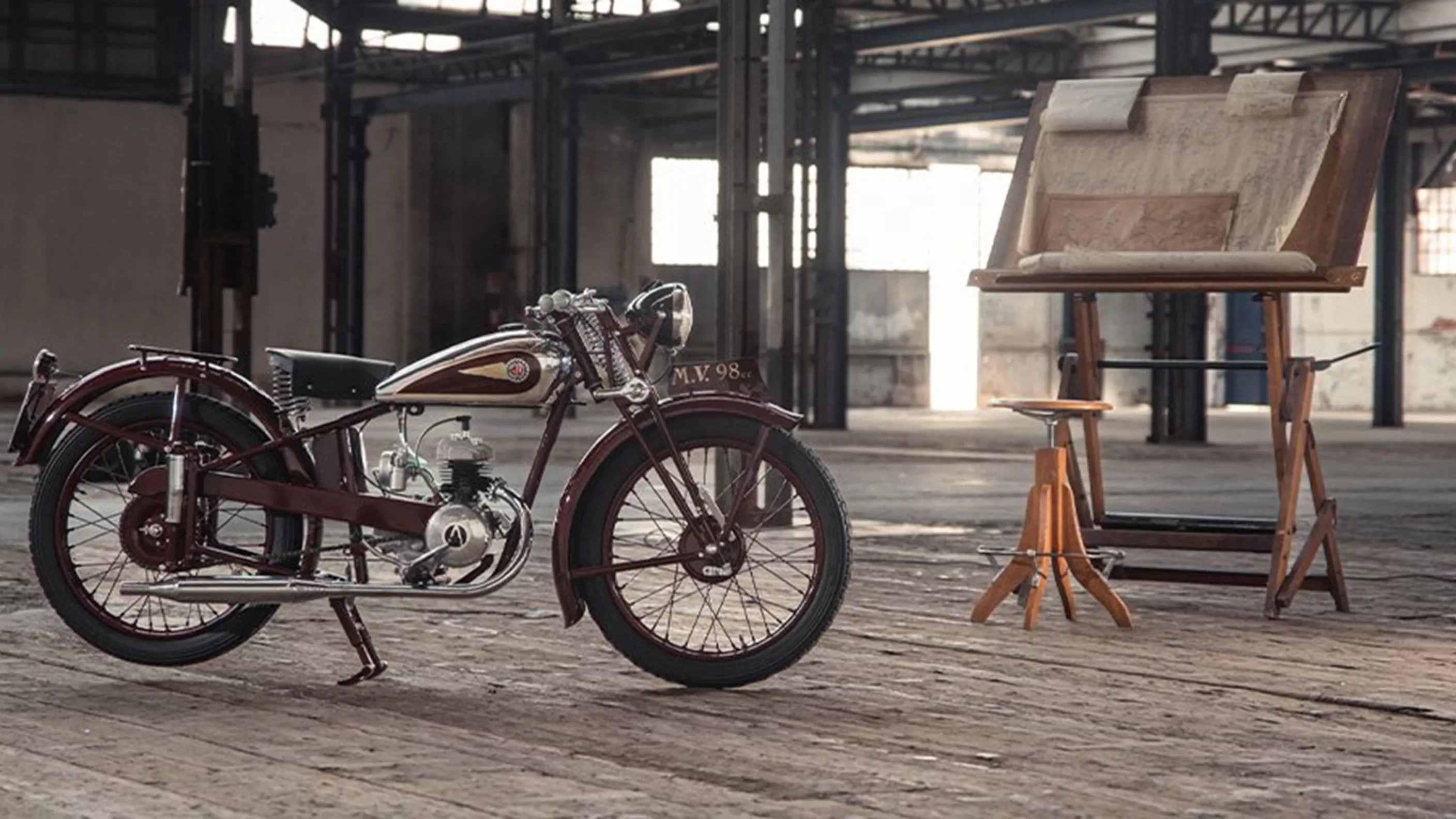
MV Agusta: The Legendary Tale of the Italian Icon
A Century of Extreme Highs and Lows!
Few motorcycle manufacturers have experienced as many triumphs and dramas in their history as the Italian brand MV Agusta. Here are the key events and legendary motorcycle models from 100 years of its storied history.
&width=72&height=72&bgcolor=rgba_39_42_44_0&mode=crop)
Gregor
published on 02/02/2025
From Aircraft Manufacturer to Motorcycle Maker: The Beginnings of MV Agusta
The story of MV Agusta begins in 1927 when the first two-wheelers emerged as a side business of the aircraft manufacturer Agusta. However, World War II shifted the focus back to aviation. After the war, the first MV Agusta motorcycles were produced to provide people with an affordable and simple means of transport. As the peace treaty prohibited Italy from building war machinery, the company turned its focus to motorcycles, laying the foundation for one of the world's most renowned motorcycle brands.
The Early Years and Rise in Motorsport
The beginning was humble: the first machine, the MV 98, was so basic that even a Fiat Panda seemed like a Lamborghini in comparison. It was originally called "Vespa 98" until it was discovered that Piaggio had already registered the name.
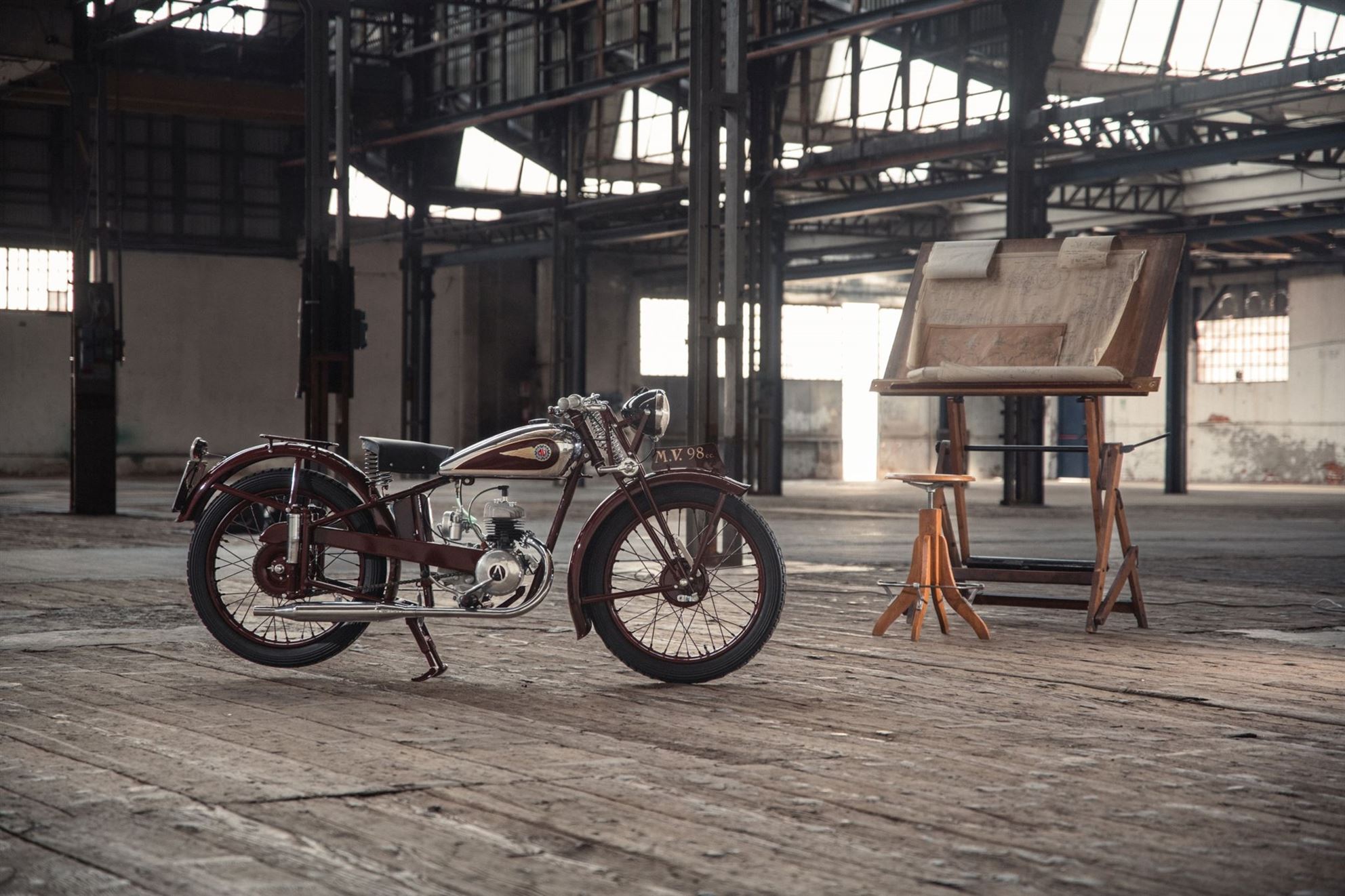
MV Agusta 98: The brand's first motorcycle, originally called "Vespa 98" until Piaggio claimed the name.
Simultaneously, a passion for motorsport began to take shape. MV Agusta started modifying production bikes for racing and quickly secured national and international successes. These victories weren't just a byproduct; they became the core of the brand's identity: 37 world championship titles, wins across nearly all classes from 125cc to the 500cc premier class, and legendary riders like John Surtees, Mike Hailwood, and Giacomo Agostini have shaped the brand's image.
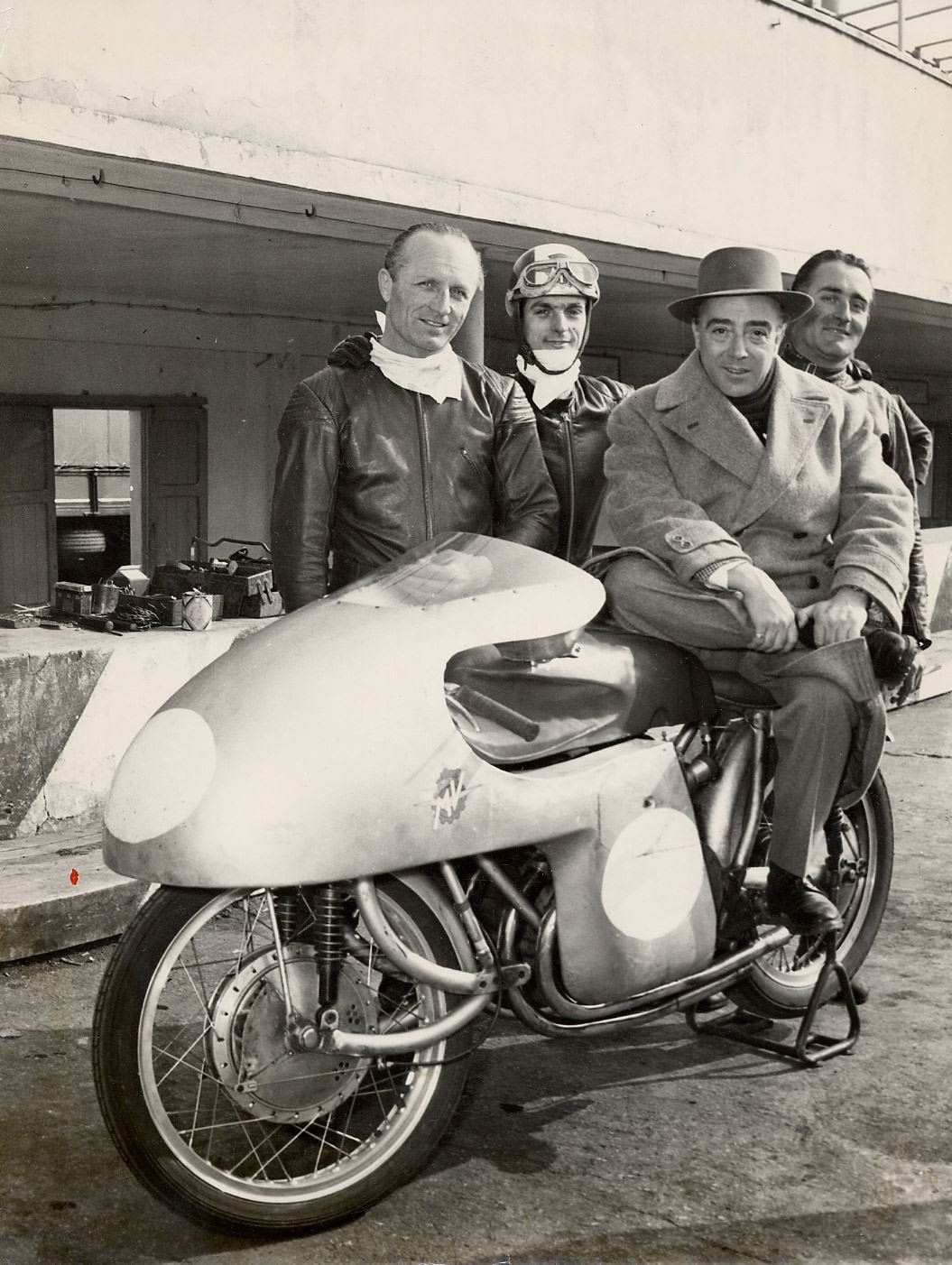
Count Domenico Agusta, wearing a hat, indulging in his greatest passion: two-wheeled motorsport.
This racing DNA flows directly into their production motorcycles. In 1965, MV Agusta introduced the MV Agusta 600, the first motorcycle with a transversely mounted four-cylinder engine. Yes, it was MV, not the Japanese, who invented this now indispensable engine layout. However, Count Domenico Agusta feared that the powerful engine might also become a competitor to MV's factory riders if it fell into the wrong hands, so he deliberately toned down the MV Agusta 600. The result: a touring motorcycle with a large, square headlight, dubbed the "Black Pig," which was considered one of the ugliest motorcycles at the time.
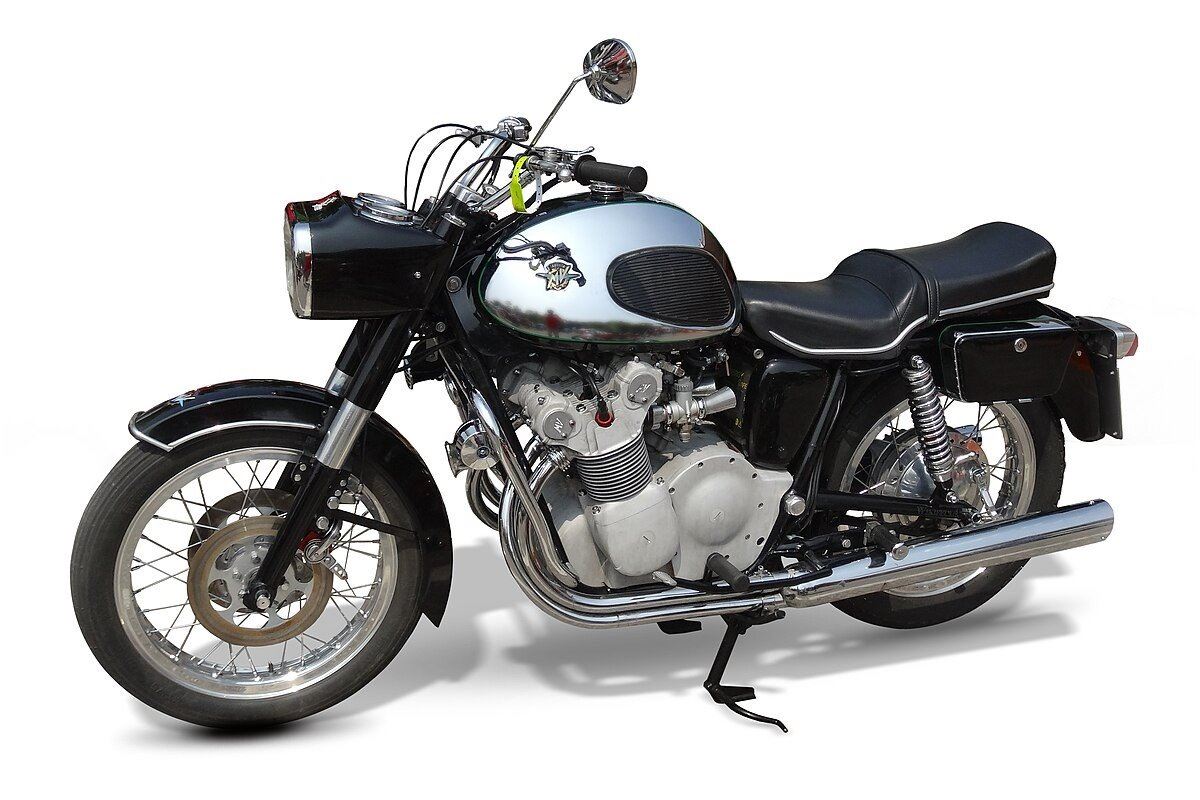
The "Black Pig," the MV Agusta 600, featuring the first transversely mounted inline four-cylinder in a motorcycle.
The MV Agusta 750 S: Birth of a Legend
From this rather unfortunate base emerged the MV Agusta 750 S at the end of the 1960s, the brand's first true sports legend. With 72 horsepower, a 25-liter tank, and weighing 237 kg, it reached nearly 200 km/h, bringing the racing spirit of the brand into a production motorcycle.
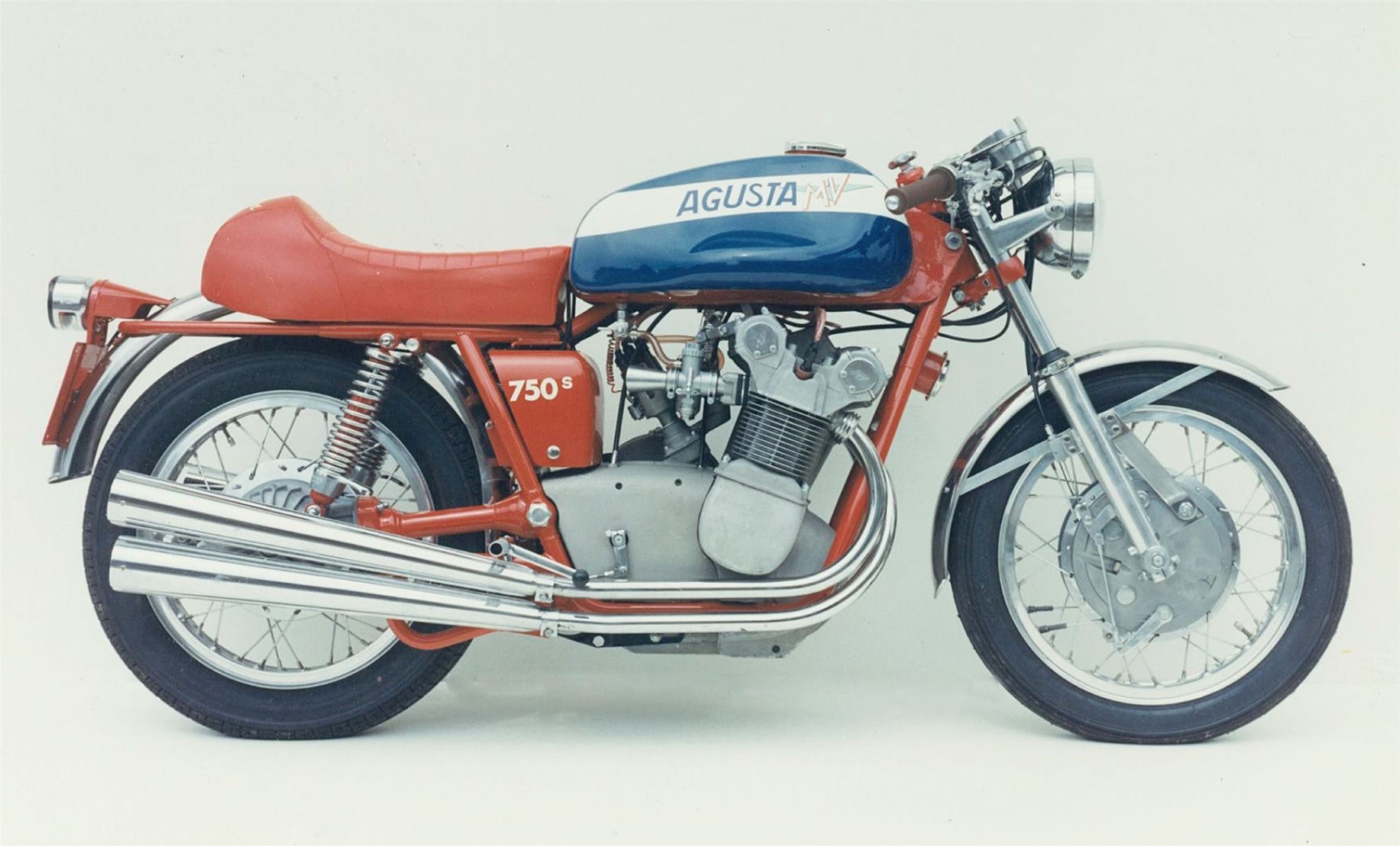
The Birth of an Icon: The MV Agusta 750 S marks the brand's first true supersport motorcycle.
Another model, the MV Agusta 750 S America, was designed to conquer the American market. However, despite powerful enhancements, it couldn't compete with the significantly more affordable Honda CB 750. The Japanese motorcycle cost just $2,190, while the Italian luxury machine demanded a hefty $6,500.
The Decline: Economic Crises and Ownership Changes at MV Agusta
Despite dominance on the racetrack, commercial success eluded the brand. The decline began with the death of Count Domenico Agusta in 1971. Subsequently, the Italian state intervened, and the brand was placed under compulsory administration, withdrawing from the Motorcycle World Championship in 1976. By 1978, the motorcycle division was completely shut down as the focus shifted to the more lucrative helicopter business.
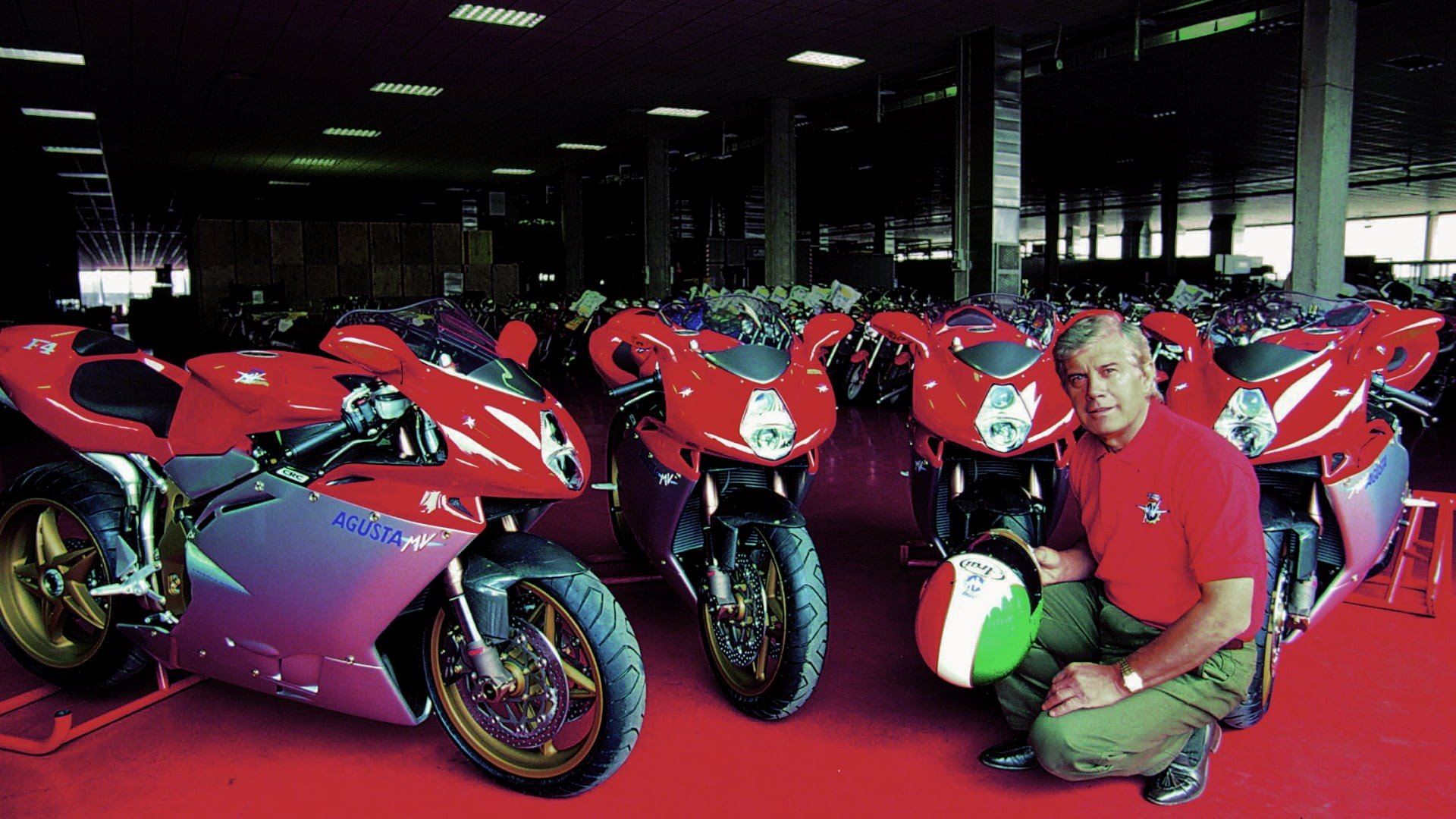
Rebirth under Cagiva: In 1992, the Castiglioni family acquired MV Agusta, bringing new hope to the brand.
However, in the 1990s, new life was breathed into the brand: The Castiglioni family, behind Cagiva, acquired MV Agusta, and design icon Massimo Tamburini developed one of the most beautiful motorcycles in history: the MV Agusta F4 750 Serie Oro.
The MV Agusta F4: A Milestone in Design
The F4 750 Serie Oro caused a sensation at its 1997 unveiling. With 126 horsepower, 72 Nm of torque, a top speed of 275 km/h, a single-sided swingarm, a trellis frame, a reverse-rotating crankshaft, and a design worthy of a place between Michelangelo's Adam and Raphael's Madonna. Many of the signature features we associate with MV today were established with the F4.
However, take note: The F4 was introduced in 1997 but only went into production in 1999. By then, the situation for the MV brand was already tense, with immense pressure to succeed and a critical press eagerly awaiting the first MV Agusta motorcycle in years. Claudio Castiglioni wanted—no, needed—to prove that "his motorcycle" was ready to perform, so he presented it to the critical audience at the Monza racetrack. His team of developers actually recommended a track with fewer full-throttle sections for the presentation, but Castiglioni insisted on the prestigious Autodromo Nazionale di Monza. Indeed, the press test rides covered over 2,000 km without any issues.
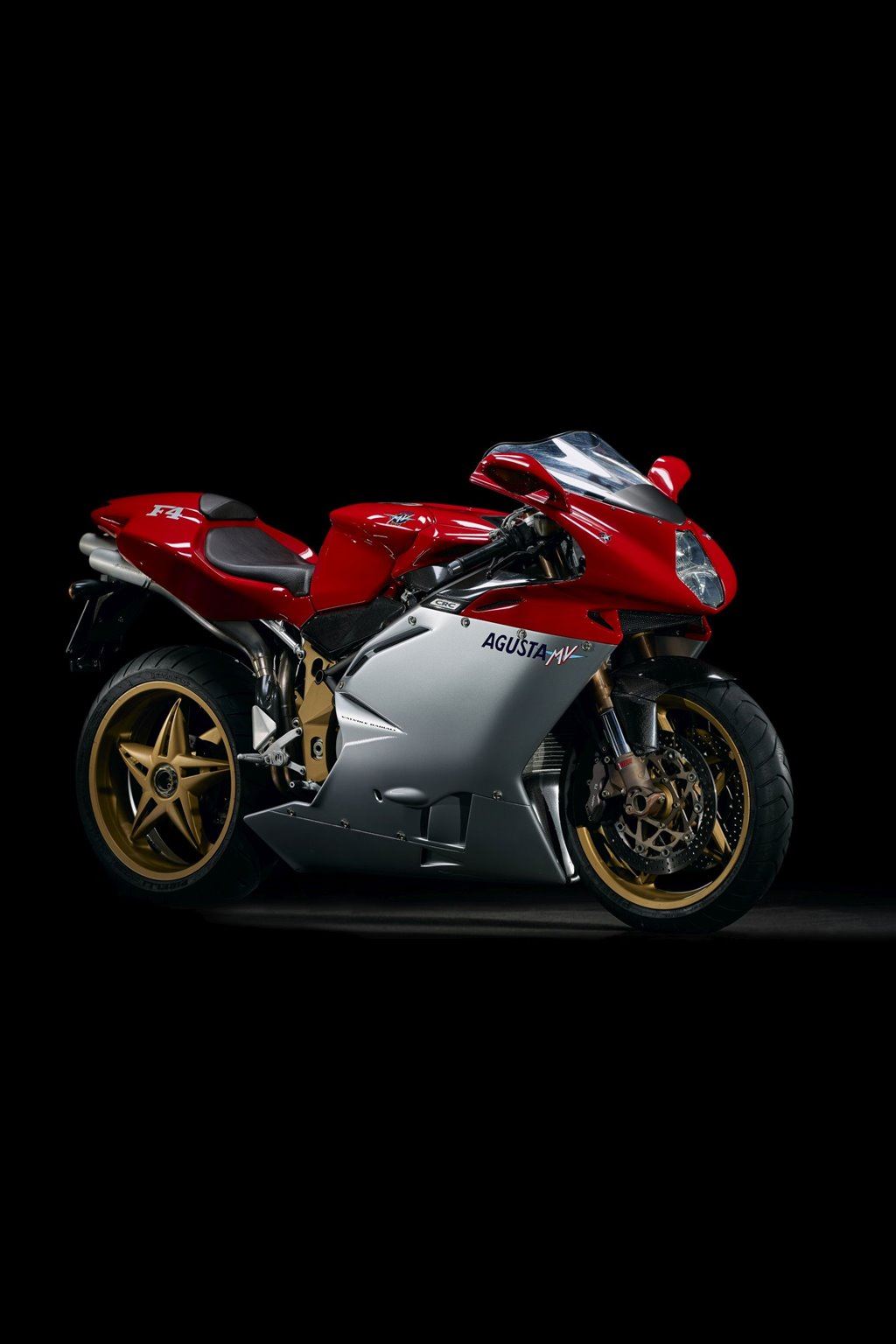
Design Revolution: In 1997, MV Agusta unveiled the F4 750 Serie Oro—a masterpiece by Massimo Tamburini.
The F4 raced so smoothly across the track that some overly critical journalists doubted the 265 km/h displayed on the speedometer. The solution? A radar gun at the end of the long straight silenced even the last skeptics, allowing Castiglioni to breathe a sigh of relief. An important milestone was achieved.
After the Serie Oro was unveiled and all units sold, MV focused on the production model, the F4 750 S. From then on, the F4 went through various development phases and numerous limited editions, yet it always retained the same spirit and love for design. Until, finally, the last F4 had to yield to the Euro4 emission standards.
MV Agusta Brutale - MV's Radical Naked Bike
When you have a golden steed in the stable, it's only logical to pass on its DNA. Thus, MV Agusta soon had a naked version ready with the F4's technology, aptly named "BRUTALE"—and for obvious reasons. It uses the same engine and frame as its supersport sibling, but in a naked bike format. Over the decades, the Brutale has evolved alongside the F4, offered in numerous variants and special editions, and is available today with either a 1,000cc four-cylinder engine or an 800cc three-cylinder engine.
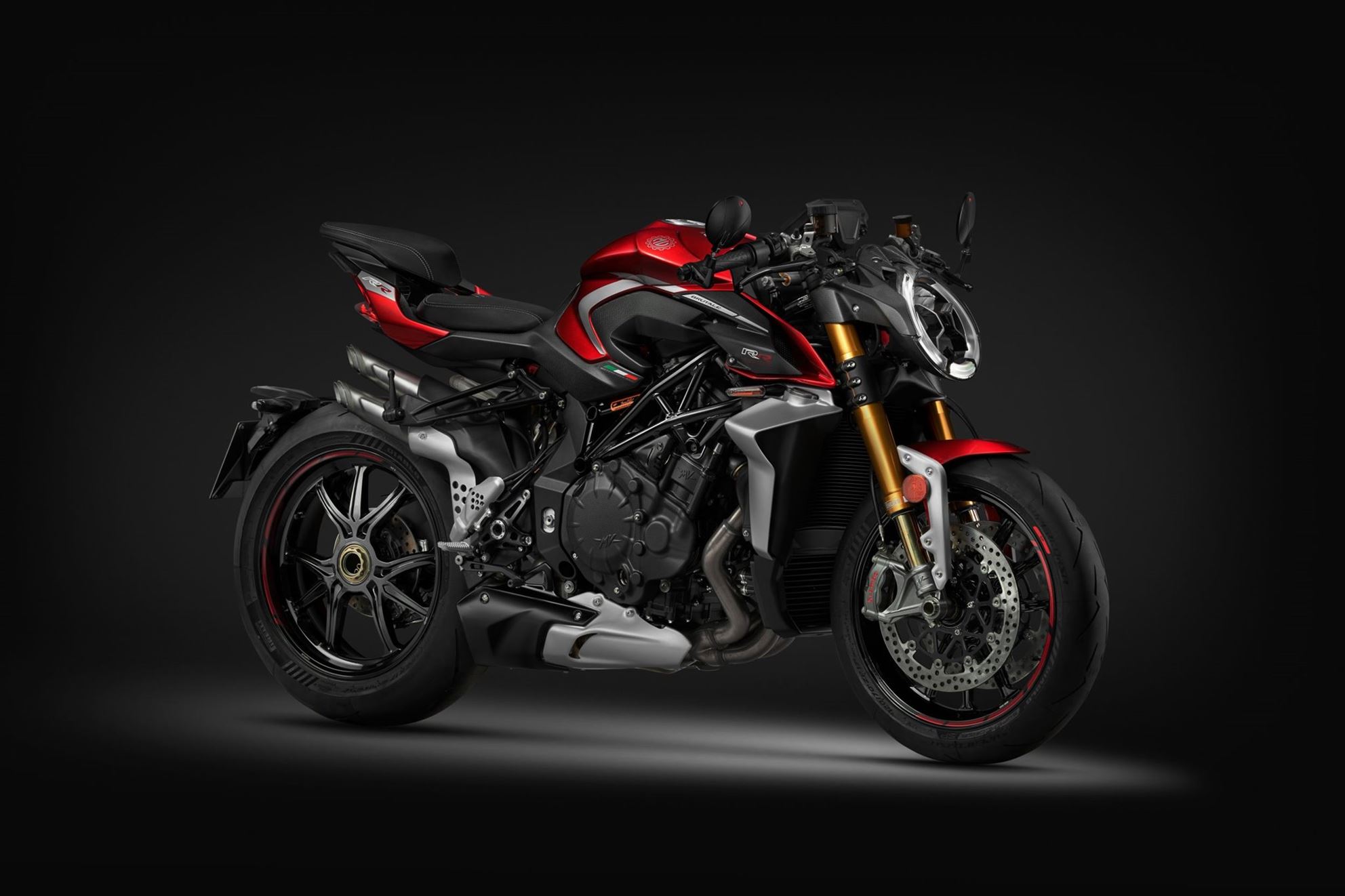
The Triumph of the Brutale: The MV Agusta Brutale brings the F4's DNA to the naked bike segment. Pictured here in the latest Ottantesimo variant, celebrating the 80th anniversary.
MV Agusta Rush: MV's Hypernaked Bike
As "brutal" as the naked version of the F4 and its successors were, MV wouldn't be MV if they didn't build an even more radical model—both in performance and design. In my view, MV Agusta shares something with Lamborghini: the word "subtle" doesn't seem to exist in their vocabulary.
Just before the pandemic, precisely when Ducati unveiled the rebirth of the Streetfighter with a V4 engine, the Italians from Varese presented their vision of a hypernaked to the world: the MV Agusta Rush.
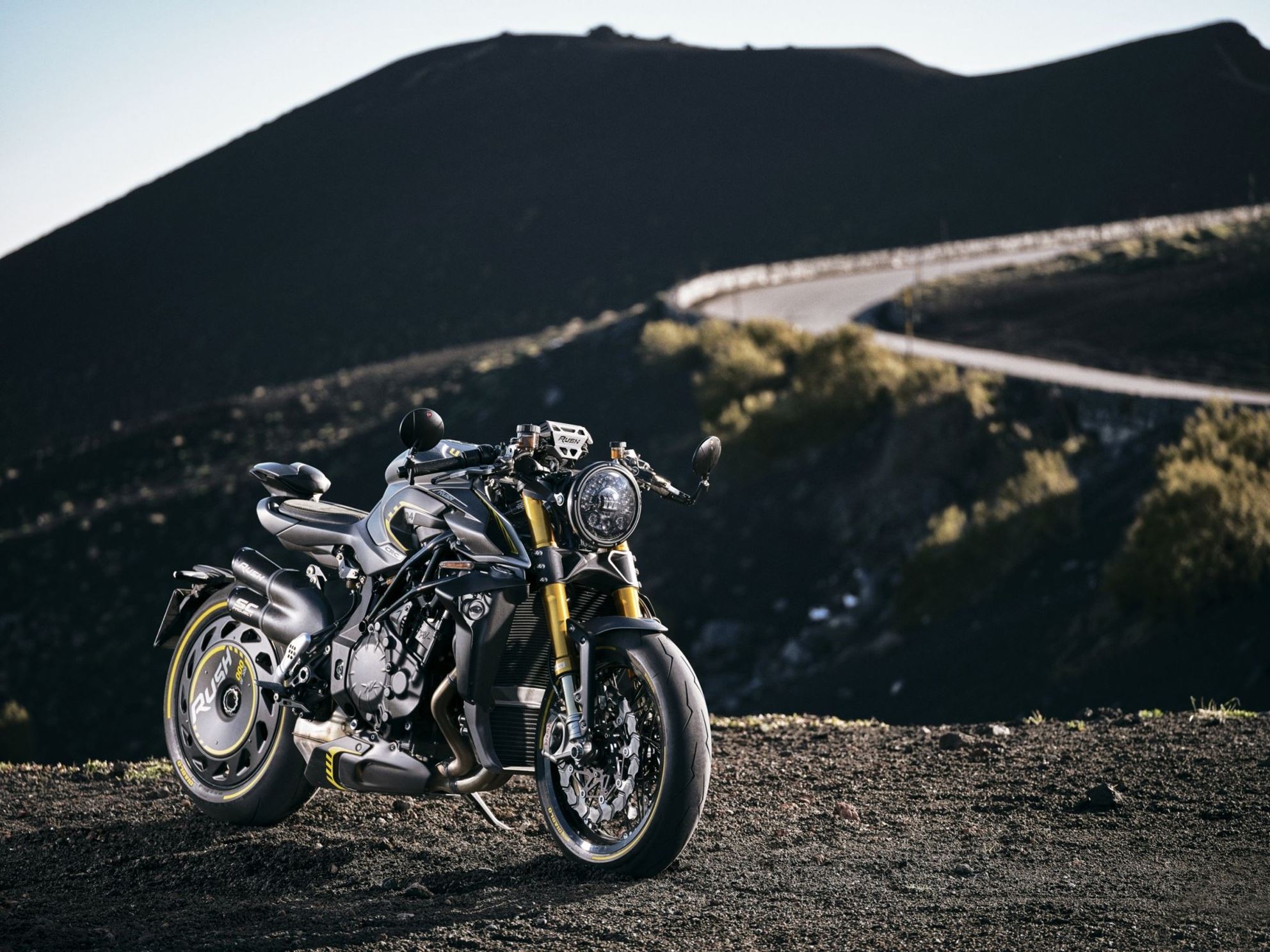
Extreme and radical: The MV Agusta Rush makes a statement with 208 horsepower and spectacular design.
Designed by the team led by Adrian Morton, the Rush is an absolute powerhouse. Not only because of its 208 horsepower at a dry weight of 186 kg and a top speed of over 300 km/h, but also due to its extremely striking design. Just take a look at the carbon rear wheel or the extravagantly shaped body parts to understand that this motorcycle is a statement.
Originally priced at around 30,000 euros for each of the planned 300 units, today you’ll find a price range of over 50,000 euros on the website—with no indication of whether any units are still available.
MV Agusta Superveloce 1000 Serie Oro - The New Queen in the MV Stable
Without the F4 in the lineup, MV Agusta was missing a fully-faired sport motorcycle. That changed with the introduction of the MV Agusta Superveloce 1000 Serie Oro—a further development of the concept that began with the 800cc F3 engine and reaches a new level in every aspect.
The design stays true to the line of the 800 series MVs, inspired by the brand's racing machines. Despite its futuristic lines, it features retro elements like the traditional round headlight, leather strap over the tank, and classic MV colors.
The Superveloce 1000 is absolutely spectacular but also extremely elegant—something that couldn't be said about some previous models. The golden frame, the golden rims, and the quad exhaust under the tail harken back to the first, legendary F4 750.
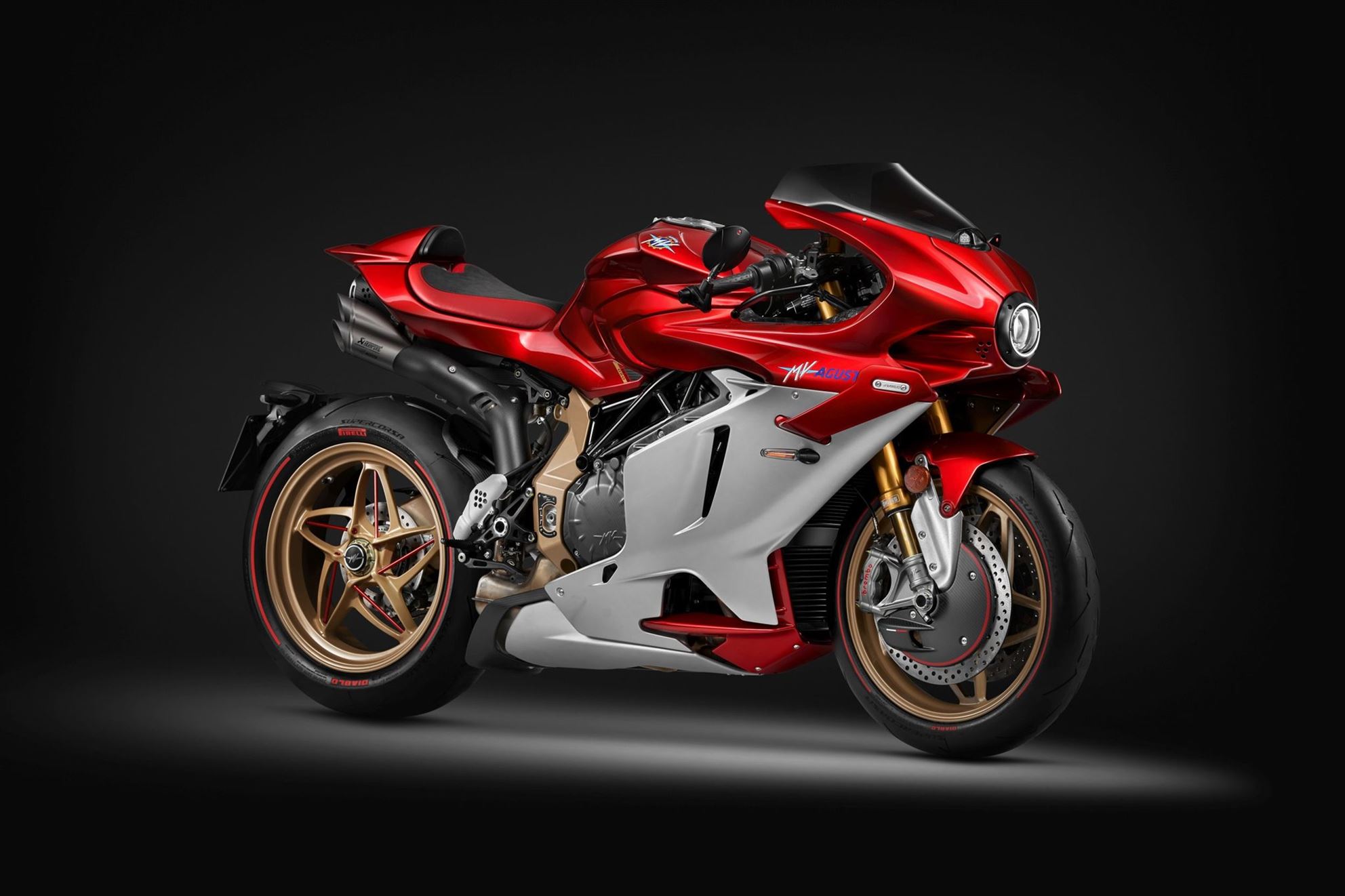
Superveloce 1000 Serie Oro: A Tribute to the Past with Cutting-Edge Technology and Elegant Design.
With electronic Öhlins suspension, the same 208-horsepower engine as the Rush, and state-of-the-art electronics, it ranks among the most technologically advanced machines in its class. Each of the 500 units is sold in a price range from 68,000 euros in Spain to 82,000 euros in Austria. And this value will only continue to increase over time.
These impressive motorcycles and their exaggerated specs make it sound as if MV Agusta is back in full force. However, the fortune of this ill-fated brand is short-lived. Brian Gillen, the man who led the development program for Italian motorcycles over the last decade, leaves the brand to head the British marque Norton, which was recently acquired by the Indian TVS Group. And this is by far not the only crisis MV has had to overcome since the Castiglionis took over.
The Many Owners and Crises of MV Agusta
Despite the allure of MV Agusta's exclusive two-wheelers and high-profile appearances, such as the 2004 Hollywood movie "I, Robot" with Will Smith, MV Agusta found itself facing financial troubles, ownership changes, and significant uncertainty just a few years later. It's like a soap opera, only with motorcycles.
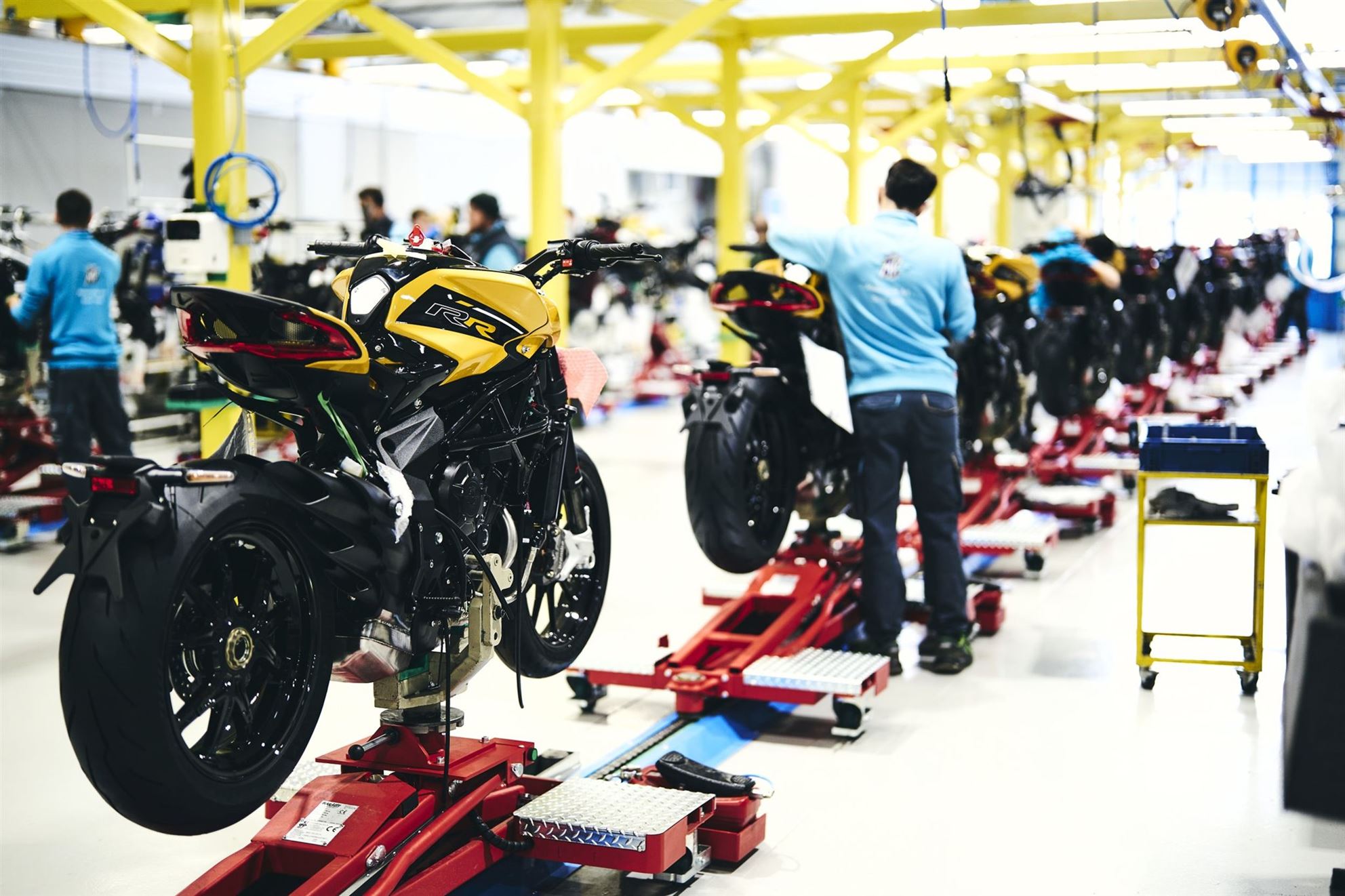
Despite all the crises, MV Agusta motorcycles are still being produced in Varese.
- In 2008, Harley-Davidson purchased the brand but sold it again by 2009.
- In 2011, Claudio Castiglioni passed away, and his son Giovanni took over leadership at MV. The new 800cc three-cylinder engine family sold well, but the sales figures were simply not enough to address the debts and the issues with the dealer network and spare parts supply.
- In 2014, to overcome financial difficulties, AMG acquired 25% of the company. You might recall Lewis Hamilton from this period, riding his Brutale through the MotoGP paddock.
- In 2016, in an extremely critical situation, MV had to undergo restructuring and find a new investor. The Russian Black Ocean Group stepped in, and from 2018, Timur Sardarov became the CEO of the Italian brand.
- However, the situation remained challenging, especially with the chaos of the Covid pandemic. In 2022, Pierer Mobility (KTM) acquired 25.1% of the shares with an option to purchase the majority, which happened early in 2024, and Hubert Trunkenpolz took over leadership.
Once again, hope is stirring at MV. The large KTM group was expected to integrate the prestigious Agusta bikes into the KTM structure, making the MV business more efficient and the bikes more reliable. From the Austrian-Italian partnership, an entirely unusual MV creation emerged—the Enduro Veloce.
However, as we now know, MV Agusta did not find fortune with the latest owner either. The supposed strength of the KTM group evaporated within weeks in the fall of 2024, with unforeseen debt mountains piling up, and the Italian luxury brand became the first casualty in KTM's battle for survival. What will happen to MV Agusta, into whose hands it will fall, and what will become of the legendary old MV models, as well as new creations like the Enduro Veloce, is currently unknown. We can only hope that investors will step in to get the former MotoGP record winner, the Lamborghini of the motorcycle market, one of the most iconic motorcycle manufacturers, back on its wheels once again.
Update: MV Agusta Back in Its Own Hands from 2025
Sometimes things move quickly. On January 31st, it was announced that the Sardarov family, through Art of Mobility S.A., has regained full control over the company, officially marking the separation from KTM. How much the former and new CEO from Russia had to pay remains unclear, with KTM vaguely mentioning a mid-double-digit million amount. This places the responsibility for MV's success back in Varese, and Sardarov aims to further improve the positive figures of recent times. In 2024, MV Agusta sold 4,000 motorcycles, representing a 116% growth compared to the previous year. The spare parts business also recorded a banner year with an availability rate of 99%. Additionally, all 219 active sales outlets are set to continue operating, with plans to expand to 270 locations this year.
The company remains independent and continues to focus on developing innovative, exclusive motorcycles, with Varese as the central hub for product development, production, sales, and service. CEO Timur Sardarov emphasizes that regaining full control strengthens MV Agusta and that the structural improvements made in recent years will ensure long-term success. The Sardarov family remains firmly committed to supporting the company, its dealers, and partners, and to leading MV Agusta into a successful future.
Conclusion: The Immortal Legend of MV Agusta
MV Agusta is more than just a motorcycle manufacturer—it's an icon of motorcycle engineering. Despite all the crises, ownership changes, and financial difficulties, MV remains a brand that embodies passion, motorsport, and breathtaking design. The future is uncertain, but the story of MV Agusta will continue—hopefully with a new chapter filled with success.
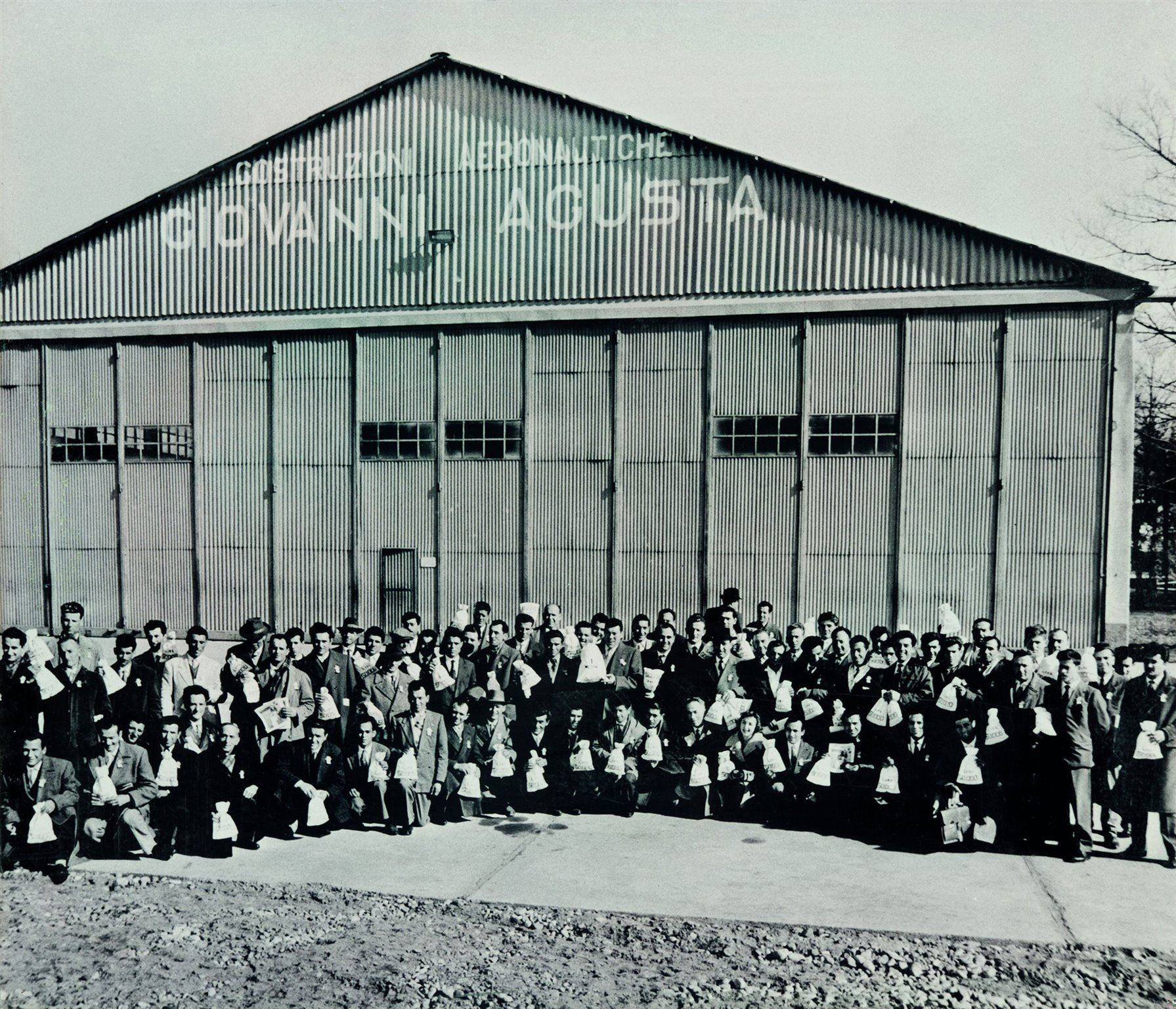
Given the countless two-wheeled and two-legged legends associated with MV Agusta that define this brand, the continuation of the Italian manufacturer is highly desirable. But if anyone can weather the current crises, it's the crisis-tested team at MV Agusta.
MV Agusta: The Legendary Tale of the Italian Icon Images
Source: 1000PS






































